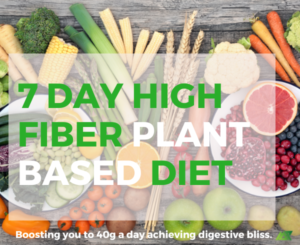Gerd Diet Plan
$9.90
GERD Diet Plan is a nutrition program designed to help control acid reflux. Gastroesophageal reflux disease can damage the tissue lining of the esophagus causing inflammation. The GERD Diet helps control this.
What is The GERD Diet?
Gastroesophageal Reflux Disease or GERD for short is a specific eating plan designed to alleviate the symptoms of GERD, also known as acid reflux.
This is a chronic digestive condition that occurs when stomach acid flows into the esophagus and this continues to cause some irritation and discomfort. The primary goal of the GERD diet is to reduce the amount of acid that the stomach produces, and this diet plays a factor and lessening the symptoms of acid reflux.
If you were able to reduce the amount of acid this in turn can help minimize symptoms such as heartburn, coughing, and regurgitation.
To achieve this, My Action Project has crafted together an effective 7-Day GERD Diet Plan that focuses on avoiding certain types of food that can trigger acid reflux. MAP Nutritionists instead encourage the consumption of foods that are less likely to cause the irritation and discomfort that acid reflux causes.
What to Eat on a GERD Diet.
The My Action Project (MAP) team has carefully put together a 7 Day GERD Diet plan that focuses holistically on foods that will not trigger reflux.
Below are some principles to follow and some types of food that we’ll be utilizing in the GERD Diet Plan.
- MAP Experts opt for low-acid foods: Instead of consuming foods that are known to trigger acid reflux, like spicy foods, fatty or fried foods, chocolate caffeine, and alcohol – we’ve also removed, peppers tomatoes, and citrus fruits.
- Choose Low acid fruits which are effective at curbing symptoms of acid reflux. We’ve used bananas, melons, and pears as these fruits can be eaten on the GERD diet.
- Consume Vegetables like broccoli kale and cauliflower.
- Lean protein sources like chicken fish and turkey
- Low-fat dairy products like milk cheese and yogurt are also suitable for the GERD diet.
- Ginger to help calm the digestive system
- Add in a good Probiotic that colonizes the digestive tract.
Things to Consider When You’re on the GERD Diet
Control portion sizes as a good diet also emphasize the importance of controlling the size of your meals to prevent overeating which can trigger acid reflux.
We also suggest that eating slowly and mindfully will help to lessen the symptoms of acid reflux. Eating slowly and savoring each bite can help to reduce the symptoms of acid reflux by allowing the stomach to digest food more efficiently.
To achieve this, you can take a mouthful of food and put your knife and fork down and try and focus on chewing your food 20 to 30 times before swallowing. Avoid drinking too much water or carbonated drinks at dinner as it dilutes the PH balance in your gut.
Try not to lie down directly after eating and stay seated for an of one hour, however, most recommendations are between two and three hours after eating to help your food digest and reduce acid reflux.
We suggest that maintaining a healthy weight it’s important to reduce the symptoms of GERD. The My Action project offers several diet plans to help reduce your weight.
Carrying extra weight applies pressure to the abdomen, so to reduce this pressure we suggest she carried a healthy weight.
The GERD diet adopts some very healthy approaches, and should you stay on the 7-Day GERD Diet for a couple of months you will not only reduce the symptoms of acid reflux but you will notice a reduction in your weight.
GERD Symptoms

There are a few GERD symptoms to be aware of before considering the GERD Diet Plan. You Should contact a medical professional initially to check whether your symptoms are related to acid reflux or a wider issue.
Some of the symptoms associated with GERD are:
- sore throat
- sore or receding gums from stomach acid
- Regurgitating food after eating
- Frequent heartburn or a burning sensation in the throat and chest
Generally, it is advised to consult a health professional if the above conditions have been frequent.
The GERD Diet plan focuses on a healthy approach to eating as well as choosing foods that have proven to help reduce the symptoms of acid reflux in the body.













